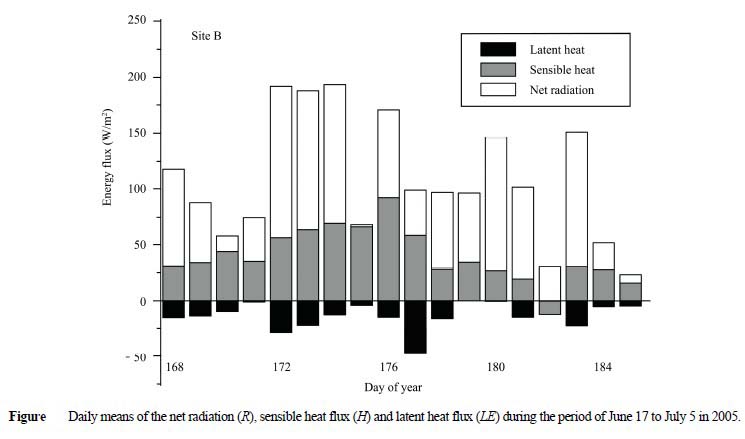Surface energy balance of Keqicar Glacier, Tianshan Mountains, China, during ablation period
Updatetime:2011-07-15From:
【Enlarge】【Reduce】
The research of Surface energy balance of Keqicar Glacier, Tianshan Mountains, China, during ablation period was finished by the researcers of Cold and Arid Regions Environmental and Engineering Research Institute.
This research focused on the process of the glacier surface energy balance. First, the glacier’s microclimate was analyzed. Second, an analysis of the components of surface energy flux is given and the change characteristic of each component was analyzed. The meteorological data of ablation season in 2005 were recorded by two automatic weather stations on Keqicar Glacier, in the southwest Tianshan Mountains of China. One is operated on the glacier near the equilibrium line with an altitude of 4,265 m (Site A) and another is operated on the glacier ablation area with an altitude of 3,700 m (Site B). These data were used to analyze the meteorological conditions and the surface energy balance (SEB) of Keqicar Glacier. Net radiation was directly measured, and turbulent heat fluxes were calculated using the bulk aerodynamic approach, including stability correction. The ablation value of 0.68 m w.e. derived from four ablation stakes is in close correspondence to the modeled value of 0.71 m w.e. During the observation period, net radiation accounts for 81.4% of the total energy with its value of 63.3 W/m2. The rest energy source is provided by the sensible heat flux with a value of 14.4 W/m2. Energy is consumed mainly by melting and evaporation, accounting for 69.5% and 29.7% of the total energy with their values of 54.0 and 23.0 W/m2, respectively. Radiative energy dominates energy exchanges at the glacier-atmosphere interface, governed by the variation in net shortwave radiation. Net short-wave radiation varies significantly due to the effects of cloudiness and the high albedo caused by solid precipitation. Wind speed influences the turbulent heat fluxes distinctively and sensible heat flux and latent heat flux are much larger in July with high wind speed.
This work was supported by the Knowledge-Innovation project (No. KZCX2-YW-GJ04) and the project of National Natural Science Foundation of China (Grant No. 41071010,40501007), and the China International Science and Technology Cooperation Program (Grant No. 2008DFA20400).

Appendix




